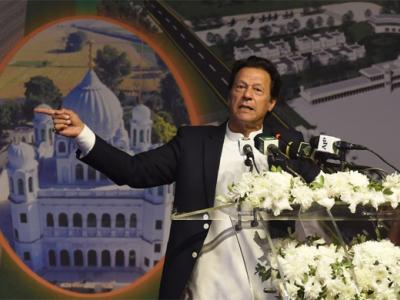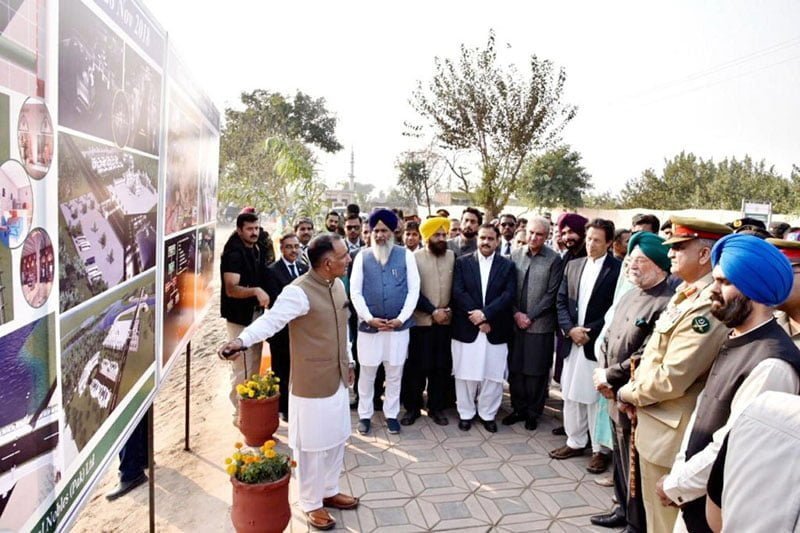 What does it mean for Sikh community?
What does it mean for Sikh community?
By Dr. Ramesh Kumar Vankwani
Finally, the governments of India and Pakistan decided to celebrate the 550th birth anniversary of Baba Guru Nanak jointly in a very unique and historic manner. This is really very pleasant surprise that both hostile sides agreed to establish Kartarpur Corridor allowing Indian devotees for visa-free entry to Gurdwara Kartarpur Sahib.
The founder of the Sikhism, Guru Nanak, born in 1469 at present-day Pakistan, is one of the greatest religious leader of all time. There is a famous incident attributed to his childhood. At the age of eleven years, boys of his caste were asked to wear the sacred thread to distinguish themselves from others. Guru Nanak refused, urging that a person should be distinguished by his values, and his good deeds could be more important, rather than just wearing by a thread.
This is a fact that all religions and philosophers asked to spread the message of mankind, eliminate hate and combat social evils. Being a spiritual thinker, Baba Guru Nanak also expressed his thoughts in the form of extraordinary poetry in Gurumukhi language. He believed that there is only one God who listens to everyone, and all human beings must have direct access to God. He taught that every person is equal and respectable, regardless of caste or gender. He also started a diverse community kitchen, known as Langar, inviting all people to dine together.
His teachings of peace, love, harmony and humanity, made him equally respectable in the eyes of all religious communities. To promote interfaith harmony and message of love, he used to travel frequently. He also visited holy sites of Mecca to show solidarity with Muslims.
 It is believed that Guru Nanak spent his last 18 years in Kartarpur, present-day Pakistan. This is the place where he himself practiced his religious philosophy and also breathed his last. He was so near and dear to hearts of everyone that all religious communities wanted to perform his last rites according to their faiths. Even today, his Muslim followers used to offer Fateha to his grave while Non-Muslim followers pay tribute at his Samadhi. Interestingly, both are located at Gurdwara Kartarpur Sahib.
It is believed that Guru Nanak spent his last 18 years in Kartarpur, present-day Pakistan. This is the place where he himself practiced his religious philosophy and also breathed his last. He was so near and dear to hearts of everyone that all religious communities wanted to perform his last rites according to their faiths. Even today, his Muslim followers used to offer Fateha to his grave while Non-Muslim followers pay tribute at his Samadhi. Interestingly, both are located at Gurdwara Kartarpur Sahib.
Tragically, the partition in 1947 not only divided the land and families in a very brutal manner but also the most sacred places attributed to great Baba Guru Nanak. The entire Gurdaspur district became part of India, along with Dera Baba Nanak city, situated on the banks of river Ravi. However, historic Kartarpur town, across the other side of river, was merged in to Pakistan.
Gurdwara Kartarpur Sahib is just few kilometer away from Indian side, but the bitter bilateral relation between both hostile countries made impossible for Indian devotees to visit the holy place for many decades. Even today, they have to came Lahore via Wahgah Border after fulfilling all visa complexities. Then, they have to travel towards Narowal which is almost 130KM away.
After the partition, Gurdwara Kartarpur Sahib also remained completely abandoned for more than 50 years. However, Muslim devotees of Guru Nanak continued to visit the shrine for offering Fateha. The historical site is visible from other side of the border, where Indians gather in large numbers to perform Darshan, sacred viewing of the site through microscopes.
The Kartarpur corridor was first proposed in the 1990s. After 19 years, the Kartarpur border issue emerged in news headlines when minister from Indian Punjab Navjot Singh Sidhu joined the oath taking ceremony of his friend and newly elected Prime Minister of Pakistan Imran Khan this year in August . Both are former legendary cricket players. He was highly criticized by Indian media for hugging the Pakistani Army Chief Qamar Javed Bajwa during the ceremony. Sidhu, on his return, informed that Pakistan Army Chief had conveyed message to him that Pakistan is going to open the visa-free Kartarpur border for the occasion of the 550th birth anniversary of Baba Guru Nanak.
“It was a dream come true,” Sidhu expressed his feelings. He also cited the holy Vedas to emphasize the importance of keeping communication channels open. According to the Vedas, when there is no communication, there is suspicion and then lack of trust happens.
This was indeed most important news of the day and unbelievable for many as well. The famous saying “when there is will, there is a way” once again proves itself true when Pakistan formally offered to open the Kartarpur border. Within next few days, a resolution was unanimously adopted in the Indian Punjab Assembly, asking the Central government to pursue with Pakistan on the issue of Kartarpur border opening and seeking an uninterrupted corridor from Dera Baba Nanak to Kartarpur. The approval of the Indian Cabinet made the process more smoothly for finalizing the Kartarpur Corridor Project. Prime Minister of Pakistan Imran Khan also decided to held groundbreaking ceremony on November 28.
In my views, journey of regional peace and stability must not be limited to only one corridor. In fact, we must consider this first step towards right direction for opening hundreds of more peace corridors. Today’s superpower the United States was once very much hostile against black people and there was clear societal discrimination among two segments. The US President Abraham Lincoln played pivotal role to end slavery and to move the country towards peace and prosperity. He advised that instead of involving ourselves in to unnecessary tussle, one must put efforts to resolve conflicts in peaceful and amicable ways. Similarly, European countries, who were once enemies to each other, are now united under the umbrella of European Union. Most recently, both Koreas, have offer hand of friendship for the best interest of region.
Today, I believe that preacher of peace and humanity Guru Nanak would be very happy, if alive, to find that after a long period of 70 years, finally people of Pakistan and India also understand the importance of connecting people and serving humanity. The credit equally goes to civil and military leadership of both countries. This peace corridor is also ray of hope for the divided families of Kashmir living both sides.
On the historic occasion of groundbreaking of Kartarpur Corridor, let’s pray jointly that Kartarpur will emerge as an international symbol of interfaith harmony where most prominent religions of the world converge. EcoSikh, a US-based NGO, has already proposed to develop 100 acres of land across Gurdwara Kartarpur Sahib as a sacred forest in order to promote eco-friendly faith tourism. Timely formation of the Guru Nanak International Interfaith Harmony Centre at Kartarpur must also be in our priority list. I believed that many other prominent organizations will also come forward for the sake of this noble cause.
We must not neglect the fact that there are also many religious Muslim sites in India, such as Ajmer Sharif. There is also a historic Dargah, located at Raja Tal, adjacent to Wagah Border, inside Indian territory. The Dargah is attributed to holy Muslim Sufi saints, named Hazrat Khidmat Ali Shah and Hazrat Azmat Ali Shah. Currently, there is no local Muslim population there and it is impossible for Pakistani villagers across the border to visit in the presence of border fence, but local Non-Muslim community is keeping the Muslim Sufi traditions alive.
I hope that Indian government will show same positive gesture allowing Pakistani devotees who want to visit such historical religious Dargahs, Masjids, and Mazars. Similarly, Pakistan, in order to promote faith tourism, must also consider opening of Hingraj Temple in Balochistan, Shri Anandpur Temple Terri, Khyber Pakhtunkhwa and other religious sites across the country for facilitating Hindu devotees in a similar way. In our 70 years history, leadership of India and Pakistan have shown enmity in almost every field of life, even this mentality leads towards fighting wars and weapons race. Today, while inaugurating the Kartarpur Corridor, both countries must sit together to understand what great legendary Abraham Lincoln actually meant by saying: “Do I not destroy my enemies when I make them my friends?”
Courtesy: The News International